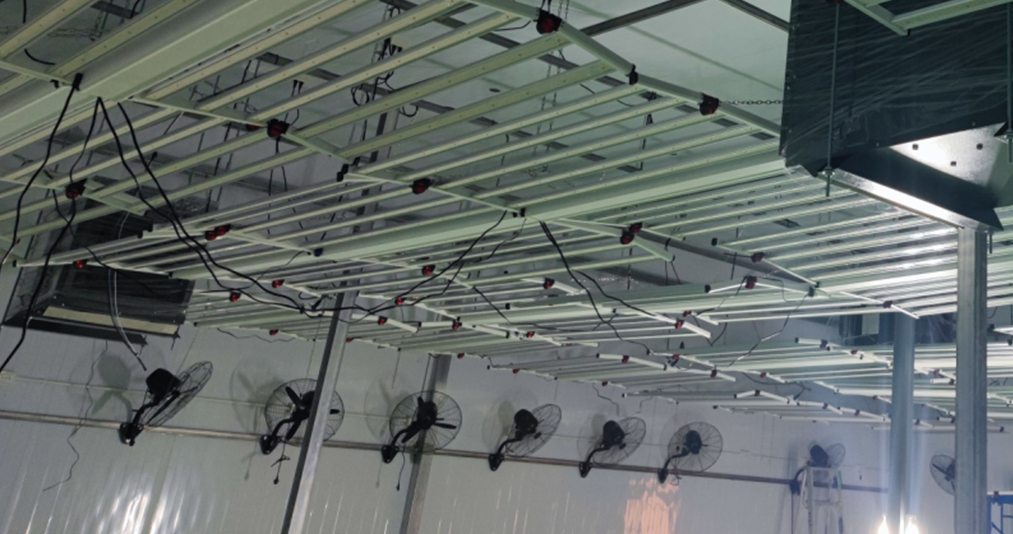Call Us
+86 13823309610
Email Us
wph@lightontechnology.com
The Difference Between Indoor- and Outdoor-Grown Weed and Why It Matters
2022-06-20
Indoor growing is about control
Robert Masterson, a cultivator at A Golden State, told us that standardized methodology is their motivation for growing indoors. “Cannabis grown indoors can be given the perfect amount of light per square foot and unique spectrums of different lighting sources to maximize terpenes and potency,” he said. “Not all indoor cultivators can completely control their environment, but when done correctly they can achieve the highest genetic potential of specific cultivars.“
This means that by using data and technology, cultivators can fine-tune every element of the process for each strain in pursuit of the holy trinity: higher yields, higher potency, and bespoke sensory qualities. For some consumers, this is precisely the type of cannabis experience they are seeking.
While myths about “today’s” THC contents being higher than ever have been circulating since the mid-2010’s, that push has been consumer-driven, not tech-driven. In 2015 The Atlantic reported the “shift toward high potency has arguably more to do with contemporary market forces than with a younger generation of marijuana enthusiasts.”
Flavor and strong THC content are not only driven by indoor cultivation, but they are ensured by more consistent growing conditions. As Masterson told us, however, “not all indoor cannabis is grown equally. Make sure you choose a brand that truly understands what they are doing. It costs more to produce cannabis in a controlled environment. Prices at a retail store generally reflect that.”
Highly visible ouid fan Justin Bieber was recently spotted cleaning up at the new Wonderbrett shop in Hollywood, a brand known for its indoor cultivation methods. We asked the company’s co-founder and cultivator, Brett Feldman, what separates his nugs from the larger market.
“What I like about our facility and work is that we’ve been able to hyper-refine the indoor process to ensure a consistent, top grade product,” Feldman told us via email. “We have the ability to achieve that quality over and over again without the issue of just guessing or gambling.”
Not all cultivators also consume, but Feldman has tips for people who like indoor bud. Primarily, at higher price points, the quality should be in line with the cost. In addition to proper packaging and relative freshness, he’s on the hunt for “meticulous attention to detail when it comes to the top shelf flower, and the way that the flower has been protected. It hasn’t been allowed to get damaged, so the flower looks very fresh and pristine. It hasn’t been smashed. The crystals are still shiny and glistening.”
Outdoor can be quality, too
That’s why Raeven Duckett Robinson, Co-founder of Community Gardens in Oakland, California is on #teamoutdoor. “It’s like [the] Twizzler versus Red Vine debate. I support outdoor because it’s more affordable—and weed should be grown outdoors anyways; indoor gets over-hyped and it’s bad for the environment.”
She told us, “based on the regulations and the way we need to package, keep records and receipts for a legal cannabis operation, there’s a lot of waste created, especially in terms of packaging. The amount of energy indoor wastes unnecessarily adds to the environmental footprint of the entire industry. The amount of energy it takes to grow the plant [indoors] is significant, and I believe it’s inefficient and unnecessary, because they can grow outside with light from the sun.”
Sam Ludwig is in alignment with Robinson’s thinking—that nature makes the best weed. “Indoor products will always look sexier with a denser structure and more visible trichomes on the exterior but indoor typically provides a shallow high and reduced medicinal properties,” he said. “The plant has been growing in nature under the sun, moon and stars for millennia, not indoors in a windowless room [lit by] LEDs.”
Along with Aster Farms CEO Julia Jacobson, Ludwig’s wife and resident dirt scholar, they designed an outdoor operation a little differently: “At Aster we grow in-ground in live soil filled with bugs, fungi, and bacteria breaking down organic matter to feed the plants. We feed the soil because the soil feeds the plants. It’s just a different approach from top to bottom, and we believe it produces a superior product with superior effects.”
Cannabis appellations could shift the industry
Wine, weed, and hospitality expert Rachel Burkons is among those pushing publicly for cannabis appellations. Burkons runs an Instagram account @smokesipsavor that puts the pleasures of California’s earth on full display, and makes recommendations for how to pair regional products, including cannabis.
At this year’s Cannabis Drinks Expo, Burkons told us, “in wine when we talk about appellations, we’ll say, ‘ok it’s going to be very hot and dry there’ or ‘it’s going to be foggy in the mornings’ and all of these factors that are specific to that appellation affect the overall flavor and performance of the wine—the exact same thing applies to cannabis.”
The true takeaway for you, the buyer, is to just try a variety of offerings, and stick with whatever speaks to you. The indoor/outdoor contrast is an excellent place to begin your cannabis research journey—no matter if you’re a casual dabbler or a daily dabber. Learning what makes the plants thrive is a superb way to convince yourself to grow some, too, but it all begins with making good choices in the dispensary.







